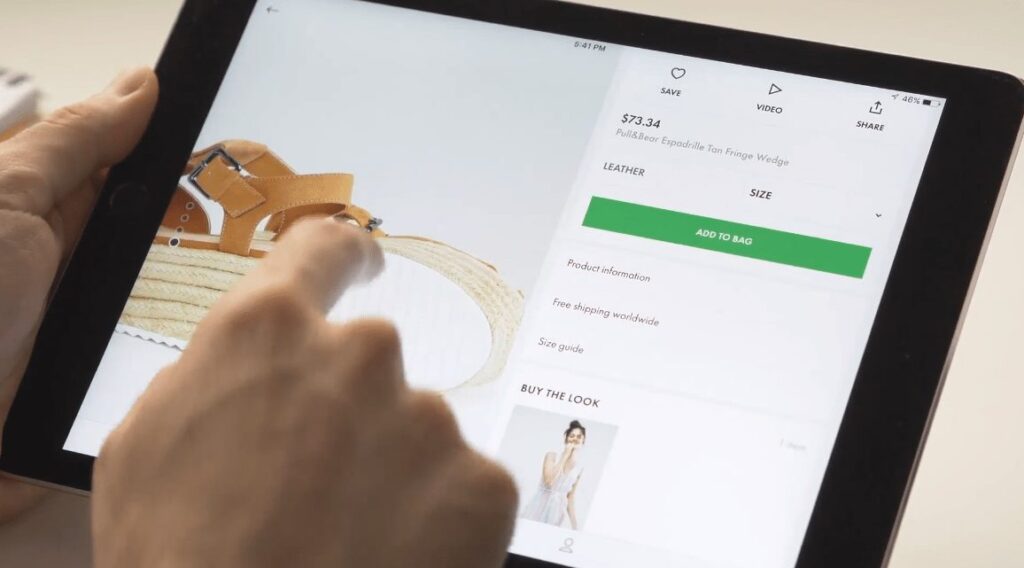Jan. 23, 2018

6 Steps to Foster Your Customers to Convert on Your Website
As a business, what is the task you most need your website to accomplish? Website Conversion. The days when the answer revolved around nothing more than brand awareness are long gone. As we move into 2018, your online presence needs to be more than static digital billboard praising your products or services. Instead, it needs to offer a dynamic experience that nudges visitors closer to becoming customers.
In other words, the experience needs to foster your audience toward website conversion. The modern user acquisition process is complex, and involves various steps of research and relationship building between potential customers and the businesses they are considering.
In most cases, your audience doesn’t simply visit your website and immediately become a customer, actually almost never. They research both you, your competitors, and their competitors and decide whether your product or service instills confidence.
This modern buyer’s journey is very complex and needs to be nurtured. Once visitors give you their contact information, you can follow up with more specific messages nurture them toward becoming a customer. But to get to that point, you have to build your website with conversions in mind. These 6 steps that can help you get to that point.
1) Define Your Conversion Goals
First, you must make sure your website accounts for what you actually consider a ‘conversion’. The term itself is too broad and can mean many different things to different people. Within a marketing context it can mean anything from visiting your pricing page (a micro conversion) to actually becoming a customer (a macro conversion).
In general, a conversion is a next step your audience needs to take to get them closer to becoming a customer as defined by you. Most often, that refers to a lead conversion, where an interested visitor fills out type of form for more information or executes a purchase. For the majority of this article, this is the conversion type I’ll focus on.
With that in mind, you need to define your conversion goals. How many leads do you actually want to generate per week, month, year? What type of visitors are you looking to convert to leads? Answering these questions is a crucial first step to make sure that every web-related decision is made with your overarching goal in mind. Keep in mind the answer should not be “as many as I can get” this is to ambiguous and I hear far to often. I ask my clients to be SPECIFIC and think about the implications. If you want limitless leads, can you handle the load? Can you provide the service? Can you ship the product? If you tarnish your opportunity by not fulfilling the clients experience, that client will no longer be a client.
2) Optimize Your Web Structure for Conversions
Once you know what to aim for, it’s time to build the back-end structure of your website with your goals in mind. Optimizing your web structure for conversions means building a natural funnel that drives your audience from the landing page to more information and, eventually, a sign-up page or checkout page. Ideally, your audience should be able to get to that conversion page within 3 clicks from first visiting any page on your website.
In this step, it also makes sense to consider the conversion ratio concept, or “the ratio of links on a landing page to the number of campaign conversion goals.” On an optimized landing page, the conversion ratio is 1:1, meaning that the only ‘next step’ your audience can take is a move toward conversion. I’m exhausted when I see funnel paths on sites I visit where it takes 6 to 7 steps to get me to the end goal, feels like I’ve run a marathon.
Finally, a number of ancillary steps should be taken to optimize your website for conversions. For instance, your page load time can significantly affect your conversions; in fact, one study found that each one-second load delay results in a 7 percent loss in conversions. To check your page speed, Google Provides a pretty good tool to test the site speed, check it out here. Removing clutter from your website and strategically including whitespace can also be a conversion boon.
3) Establish Message Consistency
When it comes to conversions, the single biggest thing any marketer needs to avoid is cognitive dissonance. From the moment your audience first learns about your brand to the point of conversion, your message needs to be consistent in conveying your core benefits and value proposition. CONTINUITY PEOPLE! CONTINUITY!
Message consistency goes beyond web and content design. Your digital ads, social media posts, and emails all need to convey the same basic message while keeping the nuances of each channel in mind. It should play a central role in making sure that once visitors land on your pages, they actually convert.
Understand your core visitor sources for individual landing pages, and adjust your message accordingly. If you tout a specific benefit of your product in a Facebook ad, the page it links to needs to use the same type of language to discuss the same benefit. And of course, that consistency needs to carry through by keeping the promise you make in exchange for becoming a lead.
4) Provide Conversion Incentives
Why exactly should members of your target audience actually become leads? The answer to that question will be central to fostering your web visitors toward conversion. You won’t get a stream of leads simply by placing a ‘contact us’ form on your website. Instead, true to the reciprocity principle, you need to offer something that makes signing up worth the effort. Give before you take as the article states.
That something can vary wildly, depending on your existing web presence and capabilities. Most frequently, brands offer so-called gated content such as e-books and white papers, how-to guides and research documents relevant to their audience. An active blog or newsletter that covers and analyzes industry trends and news can generate a consistent stream of subscribers.
Other options are more in-depth. You might offer webinars or podcasts that seek to pique your audience’s curiosity and answer relevant pain points. The stronger the incentive to sign up becomes, the better you can craft your entire website toward conversion-optimized messaging and a steady stream of leads.
5) Make the Conversion Point Obvious
Of course, even the best conversion incentive matters little if your audience doesn’t know how to actually get to that point. One of the biggest impediments to conversions is the fact that visitors who would like to become leads actually can’t find how.
A number of factors can be responsible for that problem. The onsite forms may be difficult to find or have too many fields to convert. Your site’s content may not actually make the benefit that your claiming. Call to action buttons may not be right and designs may just be off course.
That little button on the bottom of your form is actually vital in the conversion process. It needs to have the right color and be large enough to stand out from the rest of your page. At the same time, it also needs to highlight action language that succinctly communicates the benefit of signing up. Several of these choices will have a tangible effect on your conversion rates.
6) Test and Adjust (and Test and Adjust)
Finally, an important point: the conversion optimization process is never complete. Fostering your audience toward website conversions (and eventually toward becoming paying customers) requires constant optimization. What works for others may not work for you, which is why you have to make sure you keep testing.
A/B tests can be immensely beneficial for any brand. From your content layout to your call to action buttons, you can test every aspect of your online presence to maximize its impact on your conversions. There are several tools in the market to help truly identify how the users are engaging or not. Some notable tools I frequently use are UsabilityHub, Unbounce and Google Optimize which I’ll cover off in a future blog. Over time, you can use the results of these tests to ensure a more effective website that keeps your user acquisition process in mind.
Building Your Website with Conversions in Mind
Follow these steps, and you have modernized your online presence. You’ve fostered your customers for website conversion, taking them closer toward increasing your revenue and helping your business grow.
Of course, that cannot happen overnight. All of the above requires strategy, as well as a website build that considers user experience and conversion potential along with the design itself. I’d love to help you in that process. Contact us today to learn about our services, and partner to build a better, conversion-optimized website.
If you enjoyed this blog, I sense you’ll also appreciate my blog on Treating your website like a Grocery Store, Enjoy!
Book with us
Let’s accomplish what you are looking for, our team of experts are here for you.
Let's work togetherWarning: Working with our team may result in excessive creativity, uncontrollable 'aha' moments, and an addiction to perfect pixels. Please proceed with caution.



